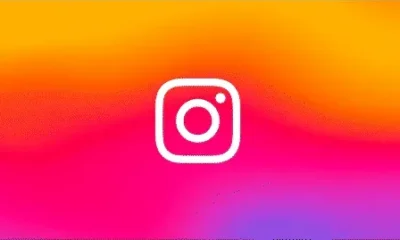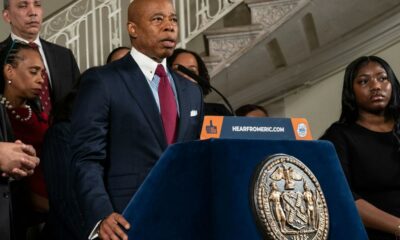SOCIAL
YouTube Announces Weekly Ad Frequency Capping, New Live-Stream Commerce Upgrades

YouTube has announced the addition of weekly frequency capping for video ad campaigns, as well as a coming live-stream shopping upgrade, as part of its Brandcast presentation for Upfronts week.
The main element for general advertisers is frequency capping, which will enable marketers to limit the amount of times a single user sees their promotion in any given week.
As explained by YouTube:
“Now, you can compliment your reach by actively setting your weekly frequency goal – a solution only YouTube can provide. Combining our unmatched audience reach and leading machine learning capabilities, advertisers will now be able to optimize how many times viewers see their ads in a week. Not only does this mean more efficient spend, but crucially, a better experience for viewers.”
Because we all know how seeing the same ad, with the same jingle, can reach the point of no return for a business. I can’t tell you how many times I’ve vowed not to spend any money with a certain brand because their ad was just so annoying, and part of that comes from repeated exposure, with that same promo coming up over and over again.
Now, you can limit this, and in combination with YouTube’s Connected TV offerings, which essentially facilitate TV-like campaign exposure, it could be a valuable element.
YouTube reports that, in testing, Discovery+ utilized frequency goals to determine optimal ad exposure levels for driving awareness lift.
“Discovery saw twice the absolute awareness lift compared to past YouTube campaigns, at a similar cost compared to non frequency-optimized campaigns.”
It could be a good option, which could also provide some great insight into optimal exposure targets, as per the Discovery+ campaign, to inform your future strategies.
In addition to this, YouTube’s also taking another step into live-stream shopping.
“Later this year, two channels will be able to go live and cohost together, uniting their communities in a single live shopping stream. And with live redirects, creators can start a shopping live stream on their channel, then redirect their audience to a brand’s channel for fans to keep watching.”
That could be a valuable update, with huge audience reach, which will also facilitate more significant influencer partnerships, with brands able to combine their audience and that of their partner influencer for much broader exposure.
YouTube’s been experimenting with new live shopping features for some time, via a range of streams and pushes to test audience response. Late last year, YouTube outlined its plans for advancing live-stream commerce, which will eventually enable ‘anyone with a mobile device and a product to easily host a live shopping stream.
That could be very lucrative, both for the users and the platform itself.
Live stream commerce is already on the rise in Asian countries, with live shopping broadcasts on Douyin, the Chinese version of TikTok, generating 7x more YoY sales in 2021, with more than 384 million people tuning in to these sessions.
Various TikTok streamers are now shifting into the same, and with broader adoption of eCommerce on the rise, it marries the key shifts in content consumption and shopping, which could become a major force in future.
The capacity to partner on streams is another key element here, which may be a valuable consideration heading into the holidays.
YouTube provided more info on live stream redirects last month.
These are some relatively small, but significant upgrades from YouTube, which could have major impacts, and it’s worth considering each within your outreach process.
You can read more on YouTube’s Brandcast update here.
SOCIAL
Snapchat Explores New Messaging Retention Feature: A Game-Changer or Risky Move?

In a recent announcement, Snapchat revealed a groundbreaking update that challenges its traditional design ethos. The platform is experimenting with an option that allows users to defy the 24-hour auto-delete rule, a feature synonymous with Snapchat’s ephemeral messaging model.
The proposed change aims to introduce a “Never delete” option in messaging retention settings, aligning Snapchat more closely with conventional messaging apps. While this move may blur Snapchat’s distinctive selling point, Snap appears convinced of its necessity.
According to Snap, the decision stems from user feedback and a commitment to innovation based on user needs. The company aims to provide greater flexibility and control over conversations, catering to the preferences of its community.
Currently undergoing trials in select markets, the new feature empowers users to adjust retention settings on a conversation-by-conversation basis. Flexibility remains paramount, with participants able to modify settings within chats and receive in-chat notifications to ensure transparency.
Snapchat underscores that the default auto-delete feature will persist, reinforcing its design philosophy centered on ephemerality. However, with the app gaining traction as a primary messaging platform, the option offers users a means to preserve longer chat histories.
The update marks a pivotal moment for Snapchat, renowned for its disappearing message premise, especially popular among younger demographics. Retaining this focus has been pivotal to Snapchat’s identity, but the shift suggests a broader strategy aimed at diversifying its user base.
This strategy may appeal particularly to older demographics, potentially extending Snapchat’s relevance as users age. By emulating features of conventional messaging platforms, Snapchat seeks to enhance its appeal and broaden its reach.
Yet, the introduction of message retention poses questions about Snapchat’s uniqueness. While addressing user demands, the risk of diluting Snapchat’s distinctiveness looms large.
As Snapchat ventures into uncharted territory, the outcome of this experiment remains uncertain. Will message retention propel Snapchat to new heights, or will it compromise the platform’s uniqueness?
Only time will tell.
SOCIAL
Catering to specific audience boosts your business, says accountant turned coach

While it is tempting to try to appeal to a broad audience, the founder of alcohol-free coaching service Just the Tonic, Sandra Parker, believes the best thing you can do for your business is focus on your niche. Here’s how she did just that.
When running a business, reaching out to as many clients as possible can be tempting. But it also risks making your marketing “too generic,” warns Sandra Parker, the founder of Just The Tonic Coaching.
“From the very start of my business, I knew exactly who I could help and who I couldn’t,” Parker told My Biggest Lessons.
Parker struggled with alcohol dependence as a young professional. Today, her business targets high-achieving individuals who face challenges similar to those she had early in her career.
“I understand their frustrations, I understand their fears, and I understand their coping mechanisms and the stories they’re telling themselves,” Parker said. “Because of that, I’m able to market very effectively, to speak in a language that they understand, and am able to reach them.”Â
“I believe that it’s really important that you know exactly who your customer or your client is, and you target them, and you resist the temptation to make your marketing too generic to try and reach everyone,” she explained.
“If you speak specifically to your target clients, you will reach them, and I believe that’s the way that you’re going to be more successful.
Watch the video for more of Sandra Parker’s biggest lessons.
SOCIAL
Instagram Tests Live-Stream Games to Enhance Engagement

Instagram’s testing out some new options to help spice up your live-streams in the app, with some live broadcasters now able to select a game that they can play with viewers in-stream.
As you can see in these example screens, posted by Ahmed Ghanem, some creators now have the option to play either “This or That”, a question and answer prompt that you can share with your viewers, or “Trivia”, to generate more engagement within your IG live-streams.
That could be a simple way to spark more conversation and interaction, which could then lead into further engagement opportunities from your live audience.
Meta’s been exploring more ways to make live-streaming a bigger consideration for IG creators, with a view to live-streams potentially catching on with more users.
That includes the gradual expansion of its “Stars” live-stream donation program, giving more creators in more regions a means to accept donations from live-stream viewers, while back in December, Instagram also added some new options to make it easier to go live using third-party tools via desktop PCs.
Live streaming has been a major shift in China, where shopping live-streams, in particular, have led to massive opportunities for streaming platforms. They haven’t caught on in the same way in Western regions, but as TikTok and YouTube look to push live-stream adoption, there is still a chance that they will become a much bigger element in future.
Which is why IG is also trying to stay in touch, and add more ways for its creators to engage via streams. Live-stream games is another element within this, which could make this a better community-building, and potentially sales-driving option.
We’ve asked Instagram for more information on this test, and we’ll update this post if/when we hear back.
-
SEARCHENGINES7 days ago
Daily Search Forum Recap: April 19, 2024
-

 WORDPRESS6 days ago
WORDPRESS6 days ago13 Best HubSpot Alternatives for 2024 (Free + Paid)
-

 WORDPRESS7 days ago
WORDPRESS7 days ago7 Best WooCommerce Points and Rewards Plugins (Free & Paid)
-

 MARKETING7 days ago
MARKETING7 days agoBattling for Attention in the 2024 Election Year Media Frenzy
-

 MARKETING6 days ago
MARKETING6 days agoAdvertising in local markets: A playbook for success
-

 SEO7 days ago
SEO7 days agoGoogle Answers Whether Having Two Sites Affects Rankings
-

 SEARCHENGINES6 days ago
SEARCHENGINES6 days agoGoogle Core Update Flux, AdSense Ad Intent, California Link Tax & More
-

 AFFILIATE MARKETING6 days ago
AFFILIATE MARKETING6 days agoGrab Microsoft Project Professional 2021 for $20 During This Flash Sale
















You must be logged in to post a comment Login